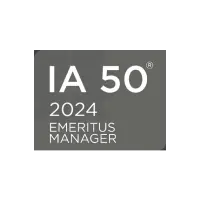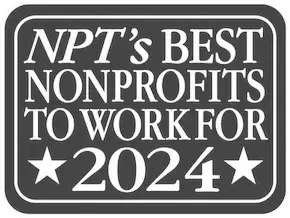VIDEO: Fresh Take – A Conversation about the Power of CDFIs to Expand Economic Power and Inclusive Growth
In February, our President and CEO Ellis Carr sat down with the Greater Washington Partnership’s CEO J.B. Holston for a conversation about economic power and inclusive growth in disinvested communities, and the role that Community Development Financial Institutions (CDFIs) play in transforming communities nationwide into places of opportunity, including in the Washington Metro area.
CDFIs have long operated hand-in-hand with our neighbors, living and working in close proximity to the communities in which we invest; community investment is at the center of our work. Working shoulder-to-shoulder with communities, we help foster the future they see for themselves, using inherent community assets to build an equitable and prosperous future. That community-centric approach helps us create tools and solutions that both work for communities and foster transformative change.
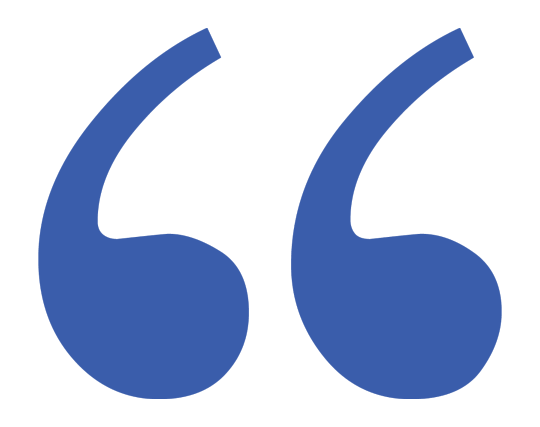
One of the things where we find ourselves today around the focus around inclusive growth is the fact that growth has not been equivalent across the demographic landscape…I think there’s a conscious effort now to really think about how that growth and opportunity can be made available to more people.
As the longstanding inequity experienced by some communities comes to light in the face of the COVID-19 pandemic, CDFIs are being recognized as the most viable option for supporting communities through a just pandemic recovery. As a CDFI, our focus on building communities of opportunity can be used in targeted ways to help communities in times of deepened particular need or inequity.
Here is the video, as well as a transcript, of their conversation. For more information about how CDFIs create impact for disinvested communities, read our stories and learn more about our mission-driven financing and programmatic focus.
Fresh Take with Ellis Carr, president and CEO of Capital Impact Partners
JB: Welcome, everyone. Thanks for joining us for today’s fresh take. My guess today is Ellis Carr. Hello, Ellis.
Ellis: Hey, JB. Good to be with you today.
JB: Thanks. It’s great to talk to you again. And great to have you on. Folks, just a little bit about Fresh Takes and the partnership. The partnership is a group that was formed to advance regional interests in the region from Baltimore through Richmond. We focus on a few different topics in particular. Expanding, broadening and deepening the digital talented skills pipeline is one. Transportation and mobility is another. And what we’re calling inclusive growth is a third.
We have a view that inclusion is a new innovation in the region that becomes the most inclusive and equitable will be the fastest growing region in the country because it will do the best for the people here and also be the most attractive region in the world. So, that’s a little bit about us. And in that context, I’m really happy to have the chance to talk with Ellis about his work, about the region, about CDFIs, etcetera. Let me start by giving you a little bit of background about Ellis. Ellis has more than 20 years in the financial services and mortgage industries, he started when he was 12.
He served as Capital Impact Partners’ president and chief executive officer. And he served in that capacity since 2016. He started with a group in 2012 as CFO and treasurer. Prior to that, Ellis worked across the investment’s capital market, strategy and corporate finance areas within Freddie Mac and in fixed income fund management both domestically and abroad at Deutsche Bank. Ellis is an Aspen Institute Financial Leader Fellow. Serves on Morgan Stanley’s Community Development Advisory Board.
He’s the Board Chair for Martha’s Table and Board Treasurer for HPN, the Housing Partnership Network. In 2018 he was recognized on Washington Business Journal’s list of top minority business leaders as well as being named among their top 40 under 40 business executives. And I won’t mention the year, Ellis. There we go.
Ellis: Appreciate that.
JB: He’s also been directly helpful with us on our inclusive growth committee, in helping us understand what a strategy around inclusive growth for the region should mean and where the gaps that the partnership generally can help accelerate filing. So, Ellis thank you for that and welcome.
Ellis: Thanks, JB.
JB: Let’s start a little bit by talking about you and your journey. I just read some of the bios, but maybe talk a little bit about how you came to Capital Impact Partners because it’s a sub-category of work in financial services. It’s a little bit different than Deutsche Bank, let me put it that way.
Ellis: It is. That it is. No, I really appreciate having the opportunity to be here with you, JB and look forward to the conversation. Maybe I’ll just start by saying that my journey was heavily influenced by my parents who were both D.C. public school teachers here for nearly 30 years each. And over the course of their work life as teachers, they made the choice explicitly to work in some of the most underserved areas in D.C.. And they made that decision because they understood that often times, opportunity was limited. Because of where you lived. And other instances where opportunities were limited to folks because of their own circumstance.
So, they spent a lot of their time and their career coaching, encouraging and supporting students because they believe that everyone deserved access to quality education. And most of all, that everyone deserved to feel like their community cared about them and was invested in their success. So, that really had a big impression on me as a kid. Seeing how the students responded to my parents and really helped to reiterate or underscore in me that I was part of a much larger community that I needed to have concern over as well. And so, really, I think initially I would say that because of that, I grew up thinking I was gonna be an educator.
And my parents told me not to do that. To get another job. And so, after a lot of trial and error, I decided to really pursuing a degree in finance and accounting going into undergrad. And my mother was a math teacher. And so, my decision was also influenced by the fact that all of the work that she had me doing on spring break and all of the breaks to keep me busy made me realize I was pretty good with numbers and math as well. So, that was really how I came to this work and made my way into Deutsche Bank and Freddie Mac, as you mentioned, before coming to Capital Impact. I think it’s interesting to note that in my early part of my career, probably for the first decade or so, I kept church and state pretty separately.
Meaning, work was about work and making and delivering resources for myself and my family and making a living while I always had a connection to community, whether that was through my church or through social organizations, I was always giving back in different ways. And I think slowly over time, as I got older, I realized that I didn’t wanna have something that was deeply a part of me around giving back to be a side project and what I did in my personal life and I really wanted to begin to have those things come together as one.
And so, interestingly enough, it was my work through the community that actually brought the opportunity with Capital Impact before me. So, really happy to have joined in 2012. And as you mentioned, was elevated to president and CEO in 2016 and haven’t looked back.
JB: That’s great. Thanks very much. I think that talk about the community connection is interesting as we talk about what CDFIs are and what they do. We can come to that in just a second but quickly here, you’re a long-term denizen of the region. This is a broad question, and I didn’t let you know I was gonna ask it, so here you go. But how has the region changed, good and bad, since you were a kid here?
Ellis: Yeah. I mean, I think it’s interesting. I’ll give you a couple anecdotes. My wife is also from the region as well and she chose to go away to school, both for undergrad and graduate school. And one of the reasons that she left was because she felt like this wasn’t a real city. And the city was really more public sector focused and she didn’t think that there was a lot of opportunity. Naturally, she moved back, as a lot of my friends and family did because D.C. underwent a rapid period of growth in the private sector and the emergence of biomedical, biotech organizations and a number of other medical organizations.
So, I think really, this region has really grown in terms of the eds and meds perspective since I was much younger. I think the other part I’d say, JB is demographically the region has changed quite dramatically. When I was growing up, D.C. was affectionately known as Chocolate City. And some might argue that that’s changed quite a lot and it’s no longer known as that. And so, not only has racial demographics changed, but so has income demographics has changed as well. We know that this is an extremely rich in resources region. Both in terms of people and institutions.
And I would say, one of the things where we find ourselves today around the focus around inclusive growth is the fact that growth has not been equivalent across the demographic landscape. And that’s not necessarily solely focused on this region, we were seeing this on a national scale and on a global scale. So, a lot of really good things have happened. And I think there’s a conscious effort now to really think about how that growth and opportunity can be made available to more people.
JB: That’s great. Thank you. Thank you for that, Ellis. Let’s talk a little about CDFIs. What are they? For an audience that might not understand the financial system, maybe talk a little bit about what they are, the role that they play and then we’ll go from there. I’ve got a couple of follow ups on that too.
Ellis: Sure. So, CDFIs are community development financial institutions, are private sector mission driven financial intermediaries whose primary purpose is to expand economic opportunities for low-income people and communities. Prior to coming to Capital Impact, I didn’t know what a CDFI was. It’s the acronym that’s becoming more and more known today, particularly in these times in the last year. But they’re a vital part of the financial ecosystem. And so, CDFIs can be structured as banks or credit unions or loan funds, which Capital Impact is. Or venture capital providers.
And typically, you will see them really embedded in communities which are and focused on supporting businesses. Investing in schools or local health care centers or community centers. All in efforts to provide and create opportunity for their residence. When you think about where CDFIs are in the financial landscape, they really play a role in communities that often times, mainstream banks and financial institutions can’t play and don’t play because they, I would say one of the key benefits for CDFIs is that, because they’re embedded in communities, they understand or we understand the delineation between real and perceived risk, right?
Because a lot of the work that we do in underserved or underestimated communities are really transformational in a large degree because there is a dearth or frankly, a nonexistence of financial products and support for those communities. And so, we have the ability to understand and manage risks appropriately and work with other financial institutions to leverage their capital to provide resources to communities that haven’t traditionally had capital invested in them. And so, we think of ourselves as a boutique or boutique type financial organizations that provide tailored solutions for the communities in which we serve.
Maybe a couple others things I’ll just mention, JB, around our role in the financial ecosystem. I think we play three probably distinct roles. 1.) Is really around what we call market makers and I just spoke to that. Creating new products and services when there isn’t existence of any. 2.) I think we play a role as a market catalyst. And CDFIs, we form public/private partnerships which basically leverage in this case, maybe federal dollars. And for every dollar that we are able to raise, we are able to leverage that with $10.00 of private sector dollars. So, we’re able to create those products initially based on the feedback of the community.
And then begin to develop public/private partnerships to bring those to scale. And I think the last place that we play I think really well in the financial ecosystem is what we call the community quarterback. And that’s really an organization who really understands the strategy or the goals and objectives of a community and can basically play a coordination role, both to provide the resources and the capital to really help that community achieve its desired outcomes.
JB: Yeah. That’s great. Ellis, if you can, maybe talk about a client or two. I mean, tell us who should people imagine when they think of the people that you’re lending to. A couple of stories on that front would be helpful.
Ellis: Yeah. And I’ll give maybe a couple broad categories then maybe speak to one or two. So, in this region. Capital Impact has played a role in a few different areas. We’ve primarily focused on a few different sectors. Education, health care, food and housing. And so, from a housing perspective, we will work with a affordable housing director that is providing quality and affordable housing to residents that may earn 30 to 50 or 80% of the area median income. But in a place, that’s safe and affordable, but also approximate to their jobs. We will also have had, and will continue to provide, access to capital for say a community health care center.
And a community health care in this case will provide health care services and access to health care for those individuals who may be of lower income or uninsured in the district. And an example of that would be a Unity Health Care. And finally, we have supported a number of non-profits that provide really critical safety net services to their communities.
And as you mentioned, I’m on the board of Martha’s Table here in the city that really help provide food and education supports for a number of residents in both Ward 8 – primarily in Ward 8. And Capital Impact was able to provide financing for their expansion toward the Commons, where they are able to provide a focus place-based resources for the residents in that neighborhood.
JB: And to some degree, you’re arborizing the risk between the financial institutions, you mentioned the federal government as well, that can provide some of the capital and the use of that capital. And my sense is that in order to do that, you just need to know who you’re lending to and I think you alluded to this really well and work closely with them. Which seems very different from the normal big financial institution model that we think about that. Is that right?
Ellis: Yeah, and that’s exactly right. I mean, when I mentioned either tailored or bespoke approach, some have said that we’re very artisanal in that nature because we have to go in and understand the needs of the community and then begin to develop financial products to address their needs. And so, the work that we may be doing in Detroit, which is where we do a lot of work, may be very different than D.C. The work that we’re doing in D.C. may be very different than the work we’re doing in Oakland, etcetera. As we try to take the unique needs and resources within each environment and then bring those resources together in support of the community.
JB: But low loss, those things. I’m sure you track those, and can you talk a little bit about, I think the perception again for folks who don’t know, well that just must be a highly risky category that folks are – so, they’re gonna have a bigger proportion of write offs or anything like that. And yet, I don’t think that’s necessarily the case. How do you folks think about that?
Ellis: Yeah, that’s a great question. I mean, first and foremost, I think we are a nonprofit, which means that we’re not profit maximizing. But we have to be profitable. And the reason that that’s an important distinction is that the difference between profit maximizing and profitable really allows for the communities to build capacity. And for the businesses, nonprofits and organizations that we lend in invest in to really begin to develop and create more jobs and support their community more specifically. But we are a financial institution, which means we have to look at and evaluate credit and credit worthiness just as any other financial institution would.
But we also look at and evaluate the social impacts, right? So, it’s the who and the what that’s happening. So, that could be everything from who’s leading the organization that we’re lending to? Do they have community support? Are they creating jobs? And what are the community benefits of the projects, our initiative that we’re supporting? So, we still approach our work with a similar rigor of a traditional financial services organization. But again, because we’re community based, our success is really driven by and quantified by how the community benefits from our work. So, I think to your point JB, we still have loan losses at Capital Impact, it’s S&P rated.
And we issue debt in the public markets to both individuals and institutions. So, we have to have the rigor required to be in those markets. But I think having the real understanding of the community, really helps us to understand and really cut through the perception around risk. Because as you can imagine, when something is unknown, it is definitely perceived to be more risky. And I think to your point, our loan performance has been extremely stellar, as most CDFIs have bee.
JB: That’s great. Thanks for that. Let’s talk about the impact of COVID. Both on your organization, but also more generally on the populations that you’re serving through the organization.
Ellis: Yeah. I mean, as everyone knows, 2020 was a pretty tough year for both people and businesses. And in particular, we’ve all read about all of the first responders and how they have put their lives on the line in support of others in hospitals and in medical institutions. What also has been comfort, but probably to a lesser degree are all the folks who are working, both hourly jobs and roles in which require them to put themselves in harm’s way. And because they don’t have the ability to work from home, as maybe you or I do. And there is a high correlation of folks who are working in those roles who are also lower income individuals.
And so, we’ve seen in the communities in which we serve, a really distinct and pronounced impact both on the individual people, but also the businesses that’re operating in those areas. And so, one of the focuses that we have had for some time is around ensuring that our communities have equitable access to products and services. But also, that we have the ability to begin to address the wealth gap that we’re seeing in this country, particularly the racial wealth gap. And so, as we’re looking at the number of businesses that are not expected to survive COVID, there is a significant portion of them that are minority led.
And so, that is something that is really important to us, to figure out how we can be supportive really during this time period. So, to answer your question, it’s been really debilitating for a lot of communities. And our goal has really been around how can we help support the immediate recovery. But then also really help them get back to resilient and stabilized community.
JB: Yeah. So, the path to inclusive growth is through inclusive recovery. One of the things that’s happened recently, and I’ve spoken a bit about is, the new legislation to add funding for CDFIs and MDIs. It’s roughly $12 billion in total. And to your point of leveragability of that capital, in theory, that could mean, let’s call it another $100 billion of lendable capital that might end up being available into the system through CFIs and MDIs. By virtue of that, that legislation which passed at the end of the last calendar year.
But from our conversation it’s pretty clear, it’s not just a matter of therefore Capital Impact, and others line up and say, give me $8 billion. More is gonna have to happen to really put this capital to work in a functional way. Can you talk to us a little bit about that? What’re the prospects? Is this $12 billion interesting? What do we have to do to really take advantage of it appropriately?
Ellis: Sure. So, the $12 billion that was a part of the recent stimulus package that was approved in January is pretty incredible for CDFIs and transformational. Prior to this legislation, that funding was just under about $250 million.
JB: Wow.
Ellis: We’re looking at a pretty sizeable increase in funding. Which is music to our ears, from a CDFI perspective. And just to talk a little bit about why that’s relevant, because organizations like Capital Impact and others, CDFIs. Because there is no existence of a secondary market in our space, traditionally our loans and our investments are portfolio on our balance sheet. And so, that constrains our ability to continue to lend and invest further in communities. So, having the ability to have significant availability of dollars to scale up and provide scaled solutions particularly at this time is pretty incredible.
And we’re really excited about it. That said, I think that there are challenges for us as an industry to be able to take that. To be able to utilize those dollars and resources effectively. Because we need to continue to find willing partners to partner with us. At a time that is particularly troubling from an economic perspective.
So, I think we understand that while these resources are available to us and we’ll be competing actively with our other CDFIs across the country to get those resources channeled into this region in particular. We will also need to ensure that we have and are working under a common strategy and partnership with other private institutions who really care about inclusive growth in this region.
JB: What do those private institutions need to do, Ellis? Is it the traditional big, financial institutions with the big balance sheets need to double up? Say, great. You take 12, we’ll give you 36? Talk a little bit more about that.
Ellis: Yeah. And I’ll take a step back and then answer your question, JB. Capital impact, as I mentioned, has really been focused on broader community facilities and housing, as I mentioned. And last August, we realized that more needed to be done. And we announced an alliance with CDC Small Business Finance, which is one of the larges mission based small business lenders in the country. And we did that for a few reasons but the first one and most chiefly is that we really strongly believed in a vision for holistic community and economic development in that scale centered around people and communities.
And we realized that we needed to change and pivot around the work that we were doing. Because ownership was gonna need to be key in any economic recovery. And so, CDC Small Business Finance and Capital Impact are working together initially in three specific regions across the country, this is one of them. To really help drive community and economic development at scale. And as we’ve been talking about the work that we’re gonna do it together, we recognize that even our own approach and way that we need to provide credit and capacity communities has gotta change.
Because there is a growing part of the population across the country, and particularly in this region, that has been left out of traditional and mainstream finance. And so, to reach them, we can’t use the traditional tools that we have been. We’d have to augment them similar to my comments earlier, to be able to reach those segments of the market. And so, because we are changing and evolving around how we are providing services to our communities, communities – I mean, institutions, right? Need to do the same.
And yes, it’s about capital, but it’s also about understanding and leveraging their resources that’re people resources, to really help provide us capacity SCD advised. So that we can provide the best thinking around how to reach these markets that have not been reached, these communities that have not been reached. So that we can move forward as a nation, quite frankly, and a region to create more opportunity for more people.
JB: We came out with a study this week that our friends at UI helped us pull together about corporations’ intentions post-pandemic. And it’s pretty clear that those organizations that can, intend to be a lot more hybrid in the future than they’ve been. And for a region like this, that could be good news because to a degree it means that you could live anywhere and work anywhere. Living in this region can be great in many ways. But it also has real prospective implications for the ability to recover, particularly in the urban areas.
And if you think about the businesses that’re gonna be most affected by that, they’re those that’ve been the most affected by the pandemic in many ways. It’s the small businesses that’re very dependent on having a thriving downtown. If you assume those changes, how would that affect your strategy? How would that affect your worn in Detroit or D.C. or Oakland or other areas?
Ellis: Yeah, I think that’s a great question, JB. I think for me, one of the things that we are really focused on is, and it’s in partnership with you and your team and with those who are part of the Greater Washington Partnership is, really, it’s important for us to understand where the opportunities will exist going forward. And having a better understanding of that and developing a better strategy around how to ensure that small businesses, which is a strong driver of the economic engine in this region, continues to prosper. Requires us to really have a really strong perspective around where we’re headed.
And so, one of the things that I’m excited about is that we are working to develop that strategy and partnership with you all. And I think if we have an understanding for what success looks like for us, where the next set of jobs will be created, to your point, if they are virtual or not. Then we can really help ensure that the workforce has adequate training. Folks who trained effectively for those jobs that we’ll need in the next five and 10 years. And that we can begin to provide guidance and support that we do today for small businesses so that they can pivot and take advantage of those opportunities.
So, I think for us, it’s not just about financing. It’s also about getting people prepared to take on capital. But also, to prepare to take on the market around them as well.
JB: Yeah. Yeah, it’s an interesting time because I think everyone understands the acuteness of the issue in front of us. And yet, as you mentioned, everyone is also dealing with the train wreck behind them and it’s difficult. Our higher ed partners understand the need to help scale up, more now than ever. And yet, that industry as an industry last year was as set upon as any industry. So, strategy is gonna be critical, to your point. Ellis, understanding priorities. In that context, if you think about the CDFI, MDI, the landscape of institutions like yours in this region.
You think Baltimore to Richmond. How should people think about that? Are there a lot of them, relatively speaking here? I mean, are they relatively mature? Are we over served, underserved? How do you think about that?
Ellis: Sure. I think that this region is incredibly well served with the CDFIs and MDIs in this region. There are about 1,000 CDFIs across the country operating in every state. And I would say that there are four of the largest CDFIs in the nation operating in this region. And you have three also, MDIs that operate between Richmond and Baltimore. And so, I think that we are incredibly well served, even from a neighborhood level CDFI all the way to CDFIs like Capital Impact and others that operate nationally but are headquartered here and really care about this work.
So, the great part about is that we already collaborate and work well together today. And given the intentional focus that we’ll need to provide in this region, I think that is a good foundation for what is to come around how we can plug in and support that broader strategy as it’s developed.
JB: Great. We had a question about opportunity zones. I won’t give it more context than to say, how do you think about those in the context of your work?
Ellis: Yeah. I mean, I think there are – Capital Impact does not leverage or utilize opportunity zones to date. There are a few CDFIs actually who operate in this area who have opportunity zone funds for investors to invest in. I think for us, we have thought about it as a potential capital source for us to advance the work. Yeah. But we have not done a lot of work with them.
JB: All right. Great. I wanted to talk – before I do this, let me quickly get to tell me more about how Capital Impact Partners, how big is the organization, Ellis? How many folks do you have? How do you talk about it in terms of its financial size or what are the metrics that you can share about that?
Ellis: Sure. So, Capital Impact, we’re a national nonprofit Community Development Financial Institution headquartered right here in Arlington, Virginia but we have offices in New York, Detroit, Austin and Oakland. So, we have just over 100 people working across the country. Probably a little less than half operating here in this region. And we have about $1 billion in assets under management. And some of the metrics that we look at are our loan portfolio size, which is just under $400 million. And loan performance in terms of credit quality is just under 50 basis points in terms of credit delinquency. Last year actually, delinquency and credit losses were under 10 basis points.
JB: That’s amazing.
Ellis: And so, it’s been consistently about that over the last several years. So, we’ve again, seen a lot of really strong performance and we work really closely with our borrowers and investees to make sure that they’re supported and as a result, we have good portfolio quality, as a result.
JB: Yeah. The $1 billion under management and the $400 million. How do those numbers compare to CDFIs around the country? Are you the top segment?
Ellis: Yeah. I would say Capital Impact is probably in the top five of the 1,000 CDFIs in terms of asset size. We’ve grown pretty dramatically over the last, we’ve grown over 50% over the last four years. And that was intentional. We wanted to double down in a few areas. D.C. was one of those areas and I think with the alliance with CDC Small Business Finance, we have a number of things planned for this year which we expect that number to grow pretty substantially.
JB: Yeah. My experience with CDFIs is a lot of them don’t grow. A lot of them get stuck. They have certain partners to provide capital and they just stay where they are. What’s allowed you to grow, particularly the last four years haven’t been the easiest?
Ellis: Yeah. So, I think your initial comment is well placed and I think it goes back to the access to capital for CDFIs themselves. And the fact that there’s no secondary market. So, often times liquidity is probably the access to capital and specifically equity capital is what prevents CDFIs from growing. And I think just going back to your earlier question, having the ability to have a significant amount of capital available to CDFIs, particularly the ones that have not been able to grow, provides them an opportunity to grow. And invests probably in resources such as technology, to really be able to get to a different level of scale.
And for Capital Impact in terms of our growth, we have benefited from other private partnerships where we’ve created funds that have invested in health care or education or other community type facilities where we have utilized other people’s money and generated fees off of that. And that has allowed us to grow our balance sheet in terms of net income that then could be leveraged over time. And so, our growth was really around speaking strategically around growing through partnership and generation of fees while we were able to leverage our great credit quality and invest in ourselves and grow our portfolio.
JB: Yeah. That’s fascinating. You mentioned technology and then I wanna turn to one last category of question as we wrap up here. But there’s been a huge explosion in online lending overt the last X period of time and I have to believe that some of those that, for lack of a better term, are targeted by some of those online lenders are folks who historically might’ve availed themselves of a CDFI or other. And yet, there seems to be nearly usurious interest rates in some of those online. Could you talk a little bit about that phenomenon? And you mentioned technology for CDFI, I think competing with that is something they have to think about.
Ellis: Absolutely. So, I think you are exactly right. There are a lot of organizations or companies who need access quickly to capital. And they know that the rates are unusually high. But they need the access. And one of the areas that I am thankful for, well for the last year, is that CDFIs, the brand of CDFIs has raised quite significantly as a part of the pandemic. And the civil unrest. And so, I think quite frankly, JB, a lot of people don’t know that the industry exists. And I think that the fact that we do not have, as an industry, although they’re growing, made investments in technology that are akin to another fintech.
I think does not put us on equal positioning. Does not put us on equal ground. And so, I’m confident because I know that several CDFIs and actually, a few communities that I’ve been to over the last six months, technology has been named as the top area that needs to be invested in. And so, as we think about pulling this back to this region, thinking about how we can leverage technology to serve as a conduit to develop pipelines to CDFIs is something that I think needs to be solved for.
JB: Yeah. And we should get some of the companies and partners to fund internships for folks in our educational establishments from underrepresented groups to work on that problem.
Ellis: Exactly. That’s right. I’d love that.
JB: Ellis, last question and thank you again for the time today.
Ellis: Absolutely.
JB: You mentioned the wealth gap and that’s something that we talk a lot about. If you look at the data, arguably the region or some of the MSAs in the region have done a pretty good job to some degree closing the income gap, the racial income gap of the last 20 to 30 years. But the wealth gap persists, and if anything, it’s broadened. What do we need to do to close that? Because I thought I’d ask you this question for you last.
Ellis: Absolutely. So, I think there’s two ways that have historically created wealth in this country. One is through home ownership and the other is through business ownership. And I think that those really are the two areas that I think we can and should focus on. Given the strength of this region and the institutions that are operating within it and the federal government, there’s a huge opportunity to create pathways to moving those entrepreneurs that’re two to three people up to 25 to 30 people. And I think if we can continue to be very thoughtful about how we go about that, I think we’ll see business ownership rise.
I think to your other point earlier around how the pandemic has accelerated innovation and how that is gonna change the way we operate, and work gives an opportunity to really think broadly about the region and allow people who may be within plus or minus 5 miles from the city center, to really be able to move a little bit further our where they can actually afford to buy a home. And generate wealth. And so, I think that there are ways that we can help support that, both indirectly and directly for all people in the region.
JB: That’s great. And one of the things I think too is a great point, I think we’ll end this Ellis. But your point about supporting entrepreneurs that may be two or three people in a group to, you can call it ten times that. I think as we think about entrepreneurship, it’s just so important that everybody understands that all kinds of [inaudible] [00:42:39] have an entrepreneurial element. It doesn’t all have to be Snapchat.
Ellis: Exactly. That’s exactly right.
JB: Yeah.
Ellis: We can’t underestimate either the fact of those small businesses are in a community and often times they’re investing in that community themselves. So, it has a ripple effect in terms of how wealth is created. How resources are generated in that community as well.
JB: Yeah. Well, my guess today has been Ellis Carr, the CEO of Capital Impact Partners. Very fortunate to have your group headquartered here, Ellis. I wanted to thank you for all the work you folks are doing but also for the partnership with the partnership as we work on the critical strategic issue, which is making sure this is the most inclusive growth region in the country. Ellis, thanks for all that you do and thanks for your time today.
Ellis: Thanks, JB. Great to be with you.
JB: Good.
[End of Audio]
